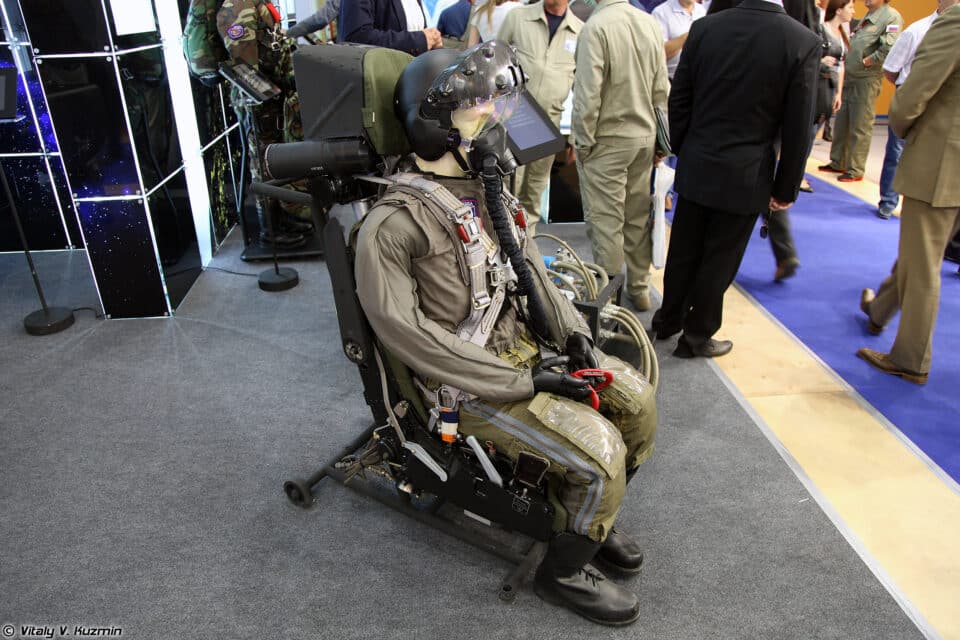Aerospace
India puts Russian K-36 ejection seat in Tejas to bar UK impact

India upgraded its “Tejas” fighter, using Russian technology, to avoid British restrictions. The Russian-designed K-36 seats will replace the Martin Baker ejection seats in the Indian fighter plane in order to get over the British restriction on sales to Argentina.
A crucial diplomatic meeting between Brig. Gen. Xavier Isaac, the head of the Argentine Air Force, and Dinesh Bhatia, the Indian ambassador to Argentina, took place on August 30. Their talk was primarily centered on the possibilities for bilateral relations between the two countries to grow, particularly in light of Argentina’s probable purchase of TEJAS combat planes and helicopters.
10 interesting facts about Ka-52 helicopter(Opens in a new browser tab)
The prospect of Argentina acquiring these military equipment shows a substantial strengthening of their strategic alliance. Both the MiG series and Sukhoi Su-30MKI fighter jets prominently incorporate the Zvezda K-36 seat, which has a long history of military aviation innovation. The Zvezda K-36D, the seat’s original design, was created in the late 1960s with the express intention of safeguarding MiG-25 Foxbat pilots. This aircraft, which gained fame for its rare Mach 3 speed and capability for stratospheric flights, was the pinnacle of famed Soviet aviation designer Mikhail Gurevich.
“The Argentinians have received a firm proposition. The process to replace the British components has already begun, a HAL official reportedly stated.
Why is China concerned about the Ka 52 being shot down?(Opens in a new browser tab)
In a strategic move, the United Kingdom has intervened to prevent Argentina from acquiring fighter jets to strengthen its military. Argentina’s procurement process has been seriously hampered by the UK’s imposition of embargoes on aircraft parts made within its borders. In addition, the UK put diplomatic pressure on Spain, forcing it to drop out of a deal to give Argentina excess Mirage-F1M fighter fighters.
The Russian K-36 seats will be placed in place of the Martin-Baker ejection seats in order to prevent the TEJAS agreement from succumbing to British strong-arm tactics. The HAL representative said, “We already have the seats available.” K-36 ejection seats are already in the possession of the HAL, which is working on the Sukhoi Su-30MKI under licence.
The K-36 ejection seat is a remarkable piece of engineering that has saved the lives of countless military pilots and aircrew members over the years. Developed by the Soviet Union during the Cold War era, the K-36 ejection seat is known for its reliability and effectiveness in rapidly ejecting pilots from a stricken aircraft in emergency situations. It has been widely used in various military aircraft, particularly in Soviet and Russian aircraft, and has gained a reputation for its robust design and high survival rate for occupants.

Aerospace
Boeing Transfers Rocket Stage to NASA, Paving Way for Human Moon Mission

Boeing has achieved a significant milestone by providing NASA with the second core stage of the Space Launch System (SLS) rocket.
This crucial component, crafted at NASA’s Michoud Assembly Facility (MAF), is set to propel the Artemis II crew into lunar orbit, marking humanity’s return to deep space after a 50-year hiatus.
The monumental Boeing-built rocket stage, the largest element of the Artemis II mission, will embark on a journey aboard the Pegasus barge, traveling 900 miles to NASA’s Kennedy Space Center.
Comparison of two legendary aircraft B777x vs B747 aircraft:Click here
Upon arrival, it will be meticulously integrated with other essential Artemis II components, including the upper stage, solid rocket boosters, and NASA’s Orion spacecraft within the iconic Vehicle Assembly Building. This intricate integration process is a vital step toward the eagerly anticipated Artemis II launch, slated for 2025.
“Boeing-built products helped land humankind on the moon in 1969, and we’re proud to continue that legacy through the Artemis generation,” remarked Dave Dutcher, vice president and program manager for Boeing’s SLS program. “Together, with NASA and our industry partners and suppliers, we are building the world’s most capable rocket and paving the way to deep space through America’s rocket factory in New Orleans.”
NASA, Lockheed Martin Reveal X-59 Quiet Supersonic Aircraft:Click here
The delivery of Core Stage 2 marks a significant achievement in the evolution of the SLS rocket. Towering over 200 feet and powered by four RS-25 engines, this core stage, coupled with two solid-fueled booster rockets, will generate a staggering 8.8 million pounds of thrust. This immense power is crucial to launching Artemis II and future missions into the vast expanse of space.
The SLS rocket stands unparalleled in its capability to transport both crew and substantial cargo to the moon and beyond in a single launch. Its extraordinary capacity will facilitate the delivery of human-rated spacecraft, habitats, and scientific missions to destinations including the moon and Mars, ushering in a new era of space exploration.
-

 Travel1 week ago
Travel1 week agoAir India to Expand US Operations with Three New Routes After a Decade
-

 Travel2 weeks ago
Travel2 weeks agoWhy We Should Avoid These Stamps in a Passport
-

 Airlines1 month ago
Airlines1 month agoInvestigations Reveal Fake Chinese Titanium in Boeing and Airbus Jets
-

 Tech4 weeks ago
Tech4 weeks agoChina’s CATL Plans 1,800-Mile Electric Plane Launch by 2027
-

 Airport3 days ago
Airport3 days agoTop 10 Largest Airports in the World by Size
-

 Aerospace4 weeks ago
Aerospace4 weeks agoChina’s Fighter Jets Turn Wings into Autonomous Drones
-

 Airlines4 days ago
Airlines4 days agoAir India Rolls Out A350s for Delhi-New York JFK and Newark Routes
-

 Defence3 weeks ago
Defence3 weeks agoBoeing Enhances Chinook with New Engines and Block II Upgrades at $96 Million







